From one beach city to another, we arrived in hot Iquique and spent 2 hours trudging from one accommodation to the next. It was peak season in this city. We eventually found a room at 'Hostal Vivar', where the staff was welcoming and the room with its 5 beds comfortable. We were in need of a large, liquid refreshment by this point. We made our way into town along Baquedano’s fanciful wooden sidewalks, passing by many buildings with lovely Georgian-style architecture. We popped into the Palacio Astoreca, originally built for a nitrate tycoon and now a cultural centre exhibiting contemporary work produced by local artists.
Iquique’s main plaza was delightful with fountains paving the way to the 1877 Torre Reloj (Clock Tower), the neoclassical Teatro Municipal and the Moorish, impressively-tiled Casino Espanol
. There were also a couple of handsomely restored trams, one of which we saw moving at a less than pedestrian pace. With all of this impressive architecture before our eyes, we found the perfect spot in a cafe-bar on Plaza Prat to drink in the atmosphere. This proved to be a good choice as some old Chilenos shouted us a beer and then left having paid for our meal as well! They also introduced us to Jessica and Esteban, a young Chilean army lady and policeman, who would become our drinking buddies for the next 24 hours...Fortunately Jessica was on her 2-week annual beach holiday and had a luxurious beach-front apartment, where we were invited to enjoy the views with a few piscolas (Pisco + Coca-Cola = potent, especially after a solid base of Cristal cervezas). We met up with them again the following day (late afternoon) on Playa Cavancha.
The Chilean corvette, Esmeralda, was sunk close to Iquique’s coast during the War of the Pacific with Peru and there is now an impressive replica boat at the port
. We dropped by the nearby small fish market for our first taste of Chilean cerviche.
Ghost towns are dotted across the desert landscape inland from Iquique; they are eerie remnants of once-flourishing mining colonies that sprung up due to the Atacama’s white gold-nitrate reserves. The most interesting of these places is Humberstone. Built in 1872, the town’s opulence reached its height in the 1940s; including a grand theatre, a large outdoor swimming pool complete with diving platforms, a hotel, a school and a wide range of shops – a surprisingly comfortable lifestyle in the middle of the desert. The development of synthetic nitrates forced the closure of the oficina by 1960, with its inhabitants abandoning the town’s infrastructure almost overnight. It was a really interesting place to explore with many buildings standing in their original form. We also visited the nearby Oficina Santa Laura where we were able to see the remnants of the industrial processes used.
On our outing we passed by pre-Hispanic geoglyphs, before arriving in picturesque Pica, an oasis village famous for its pica limes, a key ingredient of the tart and tasty pisco sour. We enjoyed a very fresh fruit juice in this oasis before returning to Iquique.
Onward night bus to San Pedro de Atacama via Calama, 12h.
Ghost towns and piscolas...
Wednesday, February 19, 2014
 Iquique, Chile
Iquique, Chile
Other Entries
-
12The wonders of the totora reed...
Oct 30112 days prior Puno, Peruphoto_camera13videocam 0comment 0
Puno, Peruphoto_camera13videocam 0comment 0 -
13Ahora aprendemos espanol...
Nov 03108 days prior Sucre, Boliviaphoto_camera22videocam 0comment 0
Sucre, Boliviaphoto_camera22videocam 0comment 0 -
14Bolivia's salty jewel...
Nov 2586 days prior Uyuni, Boliviaphoto_camera25videocam 0comment 1
Uyuni, Boliviaphoto_camera25videocam 0comment 1 -
15Being like Butch Cassidy...
Nov 2982 days prior Tupiza, Boliviaphoto_camera13videocam 0comment 0
Tupiza, Boliviaphoto_camera13videocam 0comment 0 -
16Tarabuco Market
Dec 0180 days prior Sucre, Boliviaphoto_camera12videocam 0comment 0
Sucre, Boliviaphoto_camera12videocam 0comment 0 -
17El Cerro Rico
Dec 1269 days prior Potosi, Boliviaphoto_camera14videocam 0comment 0
Potosi, Boliviaphoto_camera14videocam 0comment 0 -
18Club Universitario v Nacional Potosi
Dec 1566 days prior Sucre, Boliviaphoto_camera5videocam 0comment 0
Sucre, Boliviaphoto_camera5videocam 0comment 0 -
19The home of 'fine' Bolivian wine...
Dec 2061 days prior Tarija, Boliviaphoto_camera15videocam 0comment 1
Tarija, Boliviaphoto_camera15videocam 0comment 1 -
20Feliz Navidad!
Dec 2457 days prior Sucre, Boliviaphoto_camera7videocam 0comment 0
Sucre, Boliviaphoto_camera7videocam 0comment 0 -
21La Paz, 'The City of 3 Ps...'
Dec 2655 days prior La Paz, Boliviaphoto_camera19videocam 0comment 0
La Paz, Boliviaphoto_camera19videocam 0comment 0 -
22A belated white Christmas...
Dec 2853 days prior Condoriri, Boliviaphoto_camera15videocam 0comment 1
Condoriri, Boliviaphoto_camera15videocam 0comment 1 -
23Isla del Sol
Jan 0248 days prior Copacabana, Boliviaphoto_camera16videocam 0comment 0
Copacabana, Boliviaphoto_camera16videocam 0comment 0 -
24The World's Most Dangerous Road
Jan 0743 days prior Coroico, Boliviaphoto_camera10videocam 0comment 0
Coroico, Boliviaphoto_camera10videocam 0comment 0 -
25La Ciudad Blanca...
Jan 1238 days prior Sucre, Boliviaphoto_camera13videocam 0comment 0
Sucre, Boliviaphoto_camera13videocam 0comment 0 -
26Busy, buzzy Cochabamba...
Jan 3119 days prior Cochabamba, Boliviaphoto_camera5videocam 0comment 0
Cochabamba, Boliviaphoto_camera5videocam 0comment 0 -
27¡Adiós Sucre!
Feb 0217 days prior Sucre, Boliviaphoto_camera6videocam 0comment 1
Sucre, Boliviaphoto_camera6videocam 0comment 1 -
28Bienvenido a Chile!
Feb 163 days prior Arica, Chilephoto_camera13videocam 0comment 0
Arica, Chilephoto_camera13videocam 0comment 0 -
29Ghost towns and piscolas...
Feb 19 Iquique, Chilephoto_camera16videocam 0comment 0
Iquique, Chilephoto_camera16videocam 0comment 0 -
30Into the Desert...
Feb 223 days later San Pedro de Atacama, Chilephoto_camera13videocam 0comment 0
San Pedro de Atacama, Chilephoto_camera13videocam 0comment 0 -
31Birthday piscos...
Feb 256 days later La Serena, Chilephoto_camera11videocam 0comment 1
La Serena, Chilephoto_camera11videocam 0comment 1 -
32Chile's capital...
Feb 289 days later Santiago, Chilephoto_camera11videocam 0comment 1
Santiago, Chilephoto_camera11videocam 0comment 1 -
33'Valpo'
Mar 0312 days later Valparaiso, Chilephoto_camera14videocam 0comment 0
Valparaiso, Chilephoto_camera14videocam 0comment 0 -
34The Maule Valley
Mar 0514 days later Talca, Chilephoto_camera4videocam 0comment 1
Talca, Chilephoto_camera4videocam 0comment 1 -
35The Chilean Lakes District...
Mar 0716 days later Pucon, Chilephoto_camera10videocam 0comment 0
Pucon, Chilephoto_camera10videocam 0comment 0 -
36Kunstmann, ich liebe dich...
Mar 1019 days later Valdivia, Chilephoto_camera4videocam 0comment 0
Valdivia, Chilephoto_camera4videocam 0comment 0 -
37Isla Grande de Chiloe
Mar 1120 days later Castro, Chilephoto_camera11videocam 0comment 0
Castro, Chilephoto_camera11videocam 0comment 0 -
38A transport hub...
Mar 1322 days later Puerto Montt, Chilephoto_camera3videocam 0comment 0
Puerto Montt, Chilephoto_camera3videocam 0comment 0 -
39Into Southern Patagonia...
Mar 1625 days later Punta Arenas, Chilephoto_camera11videocam 0comment 0
Punta Arenas, Chilephoto_camera11videocam 0comment 0 -
40El Fin del Mundo...
Mar 1928 days later Ushuaia, Argentinaphoto_camera15videocam 0comment 0
Ushuaia, Argentinaphoto_camera15videocam 0comment 0 -
41The White Continent
Mar 2433 days later Antarctic Peninsula, Antarcticaphoto_camera86videocam 0comment 0
Antarctic Peninsula, Antarcticaphoto_camera86videocam 0comment 0 -
42Parque Nacional Torres del Paine
Apr 0444 days later Puerto Natales, Chilephoto_camera18videocam 0comment 0
Puerto Natales, Chilephoto_camera18videocam 0comment 0 -
43Glaciar Perito Moreno
Apr 1050 days later El Calafate, Argentinaphoto_camera12videocam 0comment 0
El Calafate, Argentinaphoto_camera12videocam 0comment 0 -
44Argentina's trekking capital...
Apr 1252 days later El Chalten, Argentinaphoto_camera9videocam 0comment 0
El Chalten, Argentinaphoto_camera9videocam 0comment 0 -
45Cherry capital...
Apr 1454 days later Los Antiguos, Argentinaphoto_camera2videocam 0comment 0
Los Antiguos, Argentinaphoto_camera2videocam 0comment 0 -
46The Argentine Lake District...
Apr 1757 days later Bariloche, Argentinaphoto_camera10videocam 0comment 0
Bariloche, Argentinaphoto_camera10videocam 0comment 0 -
47Felices Pascuas!
Apr 1959 days later Neuquen, Argentinaphoto_camera2videocam 0comment 0
Neuquen, Argentinaphoto_camera2videocam 0comment 0

 Iquique, Chile
Iquique, Chile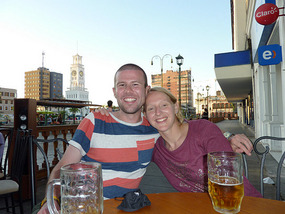
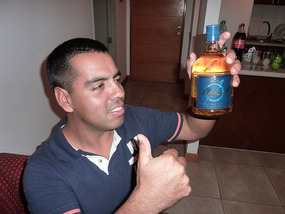





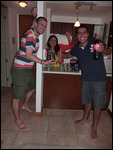
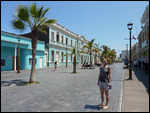
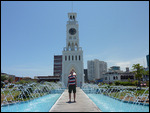
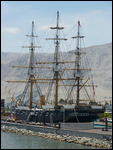
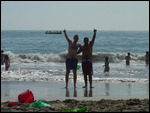
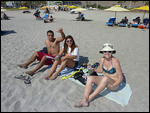

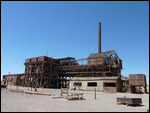
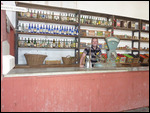
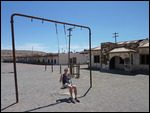

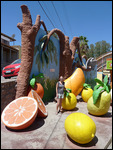
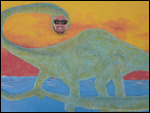

2025-05-23